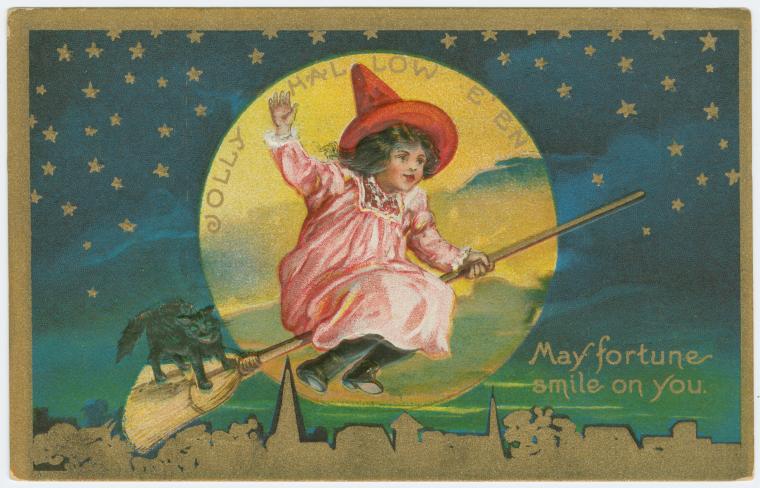 |
| "A Jolly Hallow-e'en" Vintage Postcard, ca. 1910. © NY Public Library Picture Collection. |
Winifred M. Letts's Hallow-e'en and Poems of the War is widely available online for those of you would like to delve a bit into Halloween and Great War history.
Letts, born in 1882, was of English and Irish heritage. She was also a versatile writer, penning novels, poems, plays, and children's fiction over her career.
The Halloween-themed poems in Letts's collection are touching, rather tragic, musings. They offer an older-world vision of Halloween as a holiday when the spirits of the dead might return to familiar places and people. "Hallow-e'en 1915," for example, is an emotional appeal to the war dead, hoping that they will be drawn by the welcoming lights of home. Hearth fires, stars, lanterns, and lamps are all described as beacons for the "well-beloved dead."
O men of the manor and moated hall and farm
Come back to-night; treading softly over the grass;
The dew of the autumn dusk will not betray where you pass;
The watchful dog may stir in his sleep but he'll raise no hoarse alarm.
--Winifred M. Letts, "Hallow-e'en 1915," (5-8)Other pieces of note in this great collection are "The Deserter," a well-known piece that considers the plight of those too fearful to fight, and "A Sister in a Military Hospital," about nurses much like those whose uniforms might inspire a costume or two, as I have written previously.
Letts's book connects Halloween to the First World War in an unexpected way, offering a different perspective on the holiday than the one we might know today. In her poems, mingling with ghosts on "Hallow-e'en" is a longed-for reunion rather than a spooky thrill. Most importantly, however, Halloween is for Letts, as it remains today, a time of possibilities, a brief night when real and unreal can come together and a slightly different, more magical, world appears.
© Fiona Robinson


